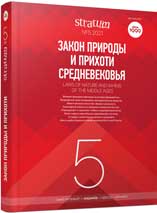Животный мир в искусстве и реальности: от раннего железного века до раннего средневековья (по материалам Среднего Подесенья)
Fauna in Art and Reality: from the Early Iron Age to the Early Middle Ages (based on materials from the Middle Desna Basin)
Author(s): Evgenii A. Shinakov, Arthur A. ChuburSubject(s): History, Archaeology, Cultural history, Environmental Geography, Middle Ages, 6th to 12th Centuries
Published by: Издательский дом Stratum, Университет «Высшая антропологическая школа»
Keywords: Middle Desna; Yukhnov Culture; Kiev culture; Antae antiquities; Volyntsevo-Romny culture; zoomorphic art; archeozoology;zoogeography;
Summary/Abstract: The authors aimed to compare the real animal world of a particular region and its reflection in the minds of people of different historical eras, represented in works of applied art and small plastic arts. The choice of the Middle Desna region was determined by its transitional character for Eastern Europe in almost all historical and archaeological periods (both in physical-geographical and ethno-cultural aspects). The authors considered materials of the Yukhnovo culture of the early Iron Age, the Great Migrations, the “antiquity of the Antae”, as well as the beginning of the authentically early Slavic period (Volyntsevo-Romny antiquities). The greatest contamination of the real animal world (first of domestic) is observed in the early Iron Age. Later, in applied art, masters gradually would withdraw from the reality into a higher degree of abstraction, into the realm of mythological and totemic-religious images, in which, however, at times, some real representatives of the fauna were fancifully reflected, both typical and exotic ones for the region. The image of horse is a continuous image in the region — from ceramic figurines and ridge attachments of the end of the 1st millennium BC to the time of the Old Rus. In addition, evolution is noted from simple images associated with a species to composite images — “chimeras”, “shapeshifters” — combining features of various animals, sometimes with the inclusion of anthropomorphic elements (binary opposition “human-animal”).
Journal: Stratum plus. Археология и культурная антропология
- Issue Year: 2021
- Issue No: 5
- Page Range: 129-146
- Page Count: 18
- Language: Russian
- Content File-PDF

